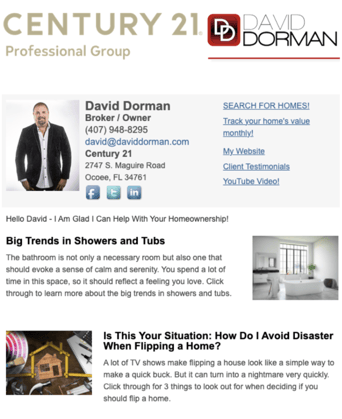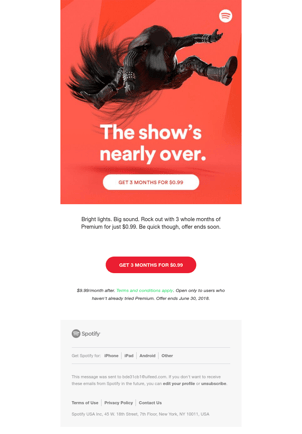5 Ways to Integrate Newsletters into Your Customer Journey
Learn how to integrate newsletters into your customer journey to build loyalty and advocacy. We share 5 strategic ways to use newsletters at each stage, from acquisition to retention.
- Published
- Reading time
Imagine you're planning a trip to a new city, and you want to make the most of your visit. You'd probably start by looking for information online, reading travel guides, and asking for recommendations from friends who have been there. As you move closer to your travel date, you might receive emails with personalized tips, hotel deals, and local event updates. This process of guiding you through each stage of your journey is similar to what businesses do when integrating newsletters into their customer journey.
Understanding and effectively mapping out the customer journey is crucial for businesses of all sizes and industries. According to Salesforce, 80% of customers now rate their experience with a company as equally important as its products. Consequently, implementing newsletters becomes a strategic component in shaping the customer journey.
In this article, we'll walk you through how businesses with established customer bases can seamlessly incorporate newsletters into their customer journey.
What is Customer Journey Mapping?
To effectively integrate newsletters into the customer journey, it's essential to understand the concept of customer journey mapping. This process involves visualizing the touchpoints where customers interact with your brand during their entire experience. It helps businesses identify opportunities to engage, assist, and delight customers at each stage of their journey.
Map Out the Key Stages of Your Customer Journey
Email marketing generates $36 for every $1 spent. However, without a well-integrated strategy, it falls short. To succeed, plan targeted campaigns tailored to each phase. Platforms like Letterhead allow you to schedule emails and customize sending based on subscriber segmentations, ensuring well-timed, personalized messaging.
The Strategic Value of Newsletters in the Customer Journey
As mentioned earlier, Newsletters are a valuable tool for businesses at every stage of the customer journey. Here are some of the benefits:
- Nurture Leads: Provide valuable content and information about your products or services.
- Retain Customers: Keep them updated on your latest products, services, and promotions.
- Cultivate Brand Loyalty: Offer exclusive content and offers to build loyalty.
- Create a Personalized Experience: Segment your list and send targeted content.
- Measure Results: Assess the effectiveness of your campaigns in achieving your goals.
Add Newsletters Across the Customer Journey
The initial step is to immerse yourself in your customer's perspective. Imagine stepping into your customer’s shoes and experiencing your brand for the very first time.
The majority of customers begin their journey through a Google search to seek solutions to their needs. They'll navigate through your portfolio, compare pricing, and ultimately decide whether to reach out to you. Each of these touchpoints presents a unique opportunity for you to connect with the customer and deliver value.
While individual journeys vary, most businesses follow five core phases:
1. Awareness Stage:
At this stage, customers are just discovering your brand. Welcome new contacts with an introduction to your brand, products, and content offerings through signup incentives and free resources.
Some content ideas to raise awareness are:
- Sign-Up Incentives
- Videos
- Product information
- Infographics
This type of information can establish credibility and nurture trust with your prospective customer. For example if you are an event producer you can captivate your audience by sending teasers of the event, information about upcoming concerts or even sell tickets.
2. Consideration Stage:
During this phase, customers actively evaluate your products or services to see whether your product or service offers the best solution to their problem.
According to Sales Force, individuals with a purchase intent typically conduct 2 to 3 Google searches related to their interests before determining which option to purchase. Therefore, consider sharing newsletters highlighting user testimonials, reviews and product comparisons, so you can send your buyer to the next phase of the customer journey.
For example, for a real estate agency it’s all about connecting aspirations to tangible experiences, so their newsletter will feature exclusive property listings and insights into the local housing market.

3. Purchase Stage:
By now your prospects are ready to buy, and they probably have a short list of options to choose from so continue nurturing the relationship.
For instance you can send limited-time offers, free trials, discounts, or rewards points to enhance the buying experience. Spotify sends prospective subscribers a limited time offer to have premium access to their music app.

For better results and user experience don’t forget to use urgent CTA’s that are easy to see and click.
4. Post-Purchase Stage:
After your customer makes a purchase, the journey doesn’t stop there. It's important to remind them why they chose you.
There are several ways you can strengthen customer loyalty after a purchase. One of them is to send newsletters with educational content that showcases the benefits of the product and stories of how other customers are using it. Plus, with the help of your marketing team, you can identify the right time to send a newsletter based on customer behavior and data.
In addition to that, It’s also important to use a software tool that allows you to request feedback through surveys to improve future buying experiences.
5. Loyalty Stage:
Sooner or later your customers will reconsider buying your product again. So, consider converting satisfied customers into brand advocates during the loyalty stage.
You can send them exclusive offers through your newsletter or send personalized recommendations based on their purchase history to strengthen their sense of community.
Well-targeted newsletters make customers feel valued by providing exclusive content and promotions. This reinforces the brand relationship and gives loyal customers incentives to continue purchasing. With a thoughtful newsletter strategy that respects the subscriber, you can leverage this communication channel to nurture loyal customers and solidify long-term affinity.
Continuously Optimize Emails Using Data
Now sending multiple newsletter campaigns at every stage of the journey requires you to collect and analyze data for fine-tuning your strategy. And, this process can be tedious due to all the multiple spreadsheets you have to set-up to manage the different content, pricing structures, audience funnels and email cadences.
Instead, consider using a platform that will allow you to monitor open rates, click-through rates, and conversion metrics under one dashboard. So, you can automate the process instead of doing everything manually.
Build Genuine Relationships, Not Just Transactions
Never forget the human behind each email address. Around 84% of consumers feel that being treated like a human rather than a metric is important. Get to know their preferences and listen to their feedback to deliver a delightful brand experience.
Integrating email into the customer journey takes work, but pays dividends. With the help of the proper tools and the right team you can automate and deliver valuable newsletter content tailored to each touch point.
When done right, email marketing can be one of your most powerful tools for sustaining business growth. Are you ready to implement newsletters to your business? Don’t forget to schedule a complementary demo consultation with our team of experts.
